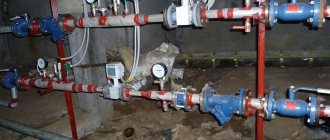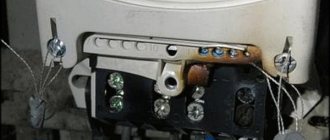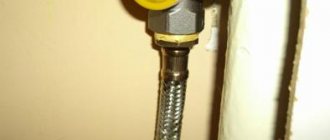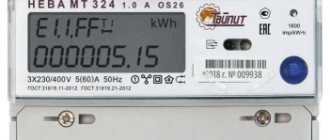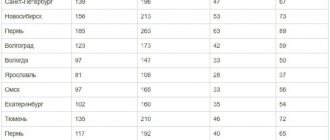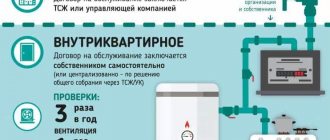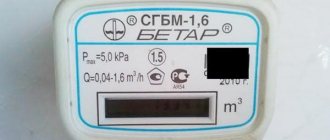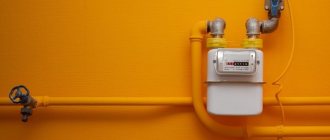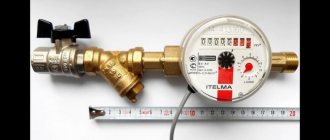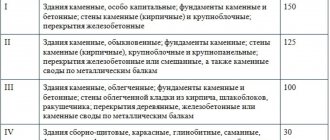Author of the article:
Muzyko Tatyana Andreevna - lawyer.
The high cost of utilities encourages citizens to purchase individual heat meters.
The costs of their installation, replacement and verification are covered by savings on housing and communal services payments. In order for calculations to be made based on instrument readings, the procedure for their operation established by law must be followed.
Legislation
- The Housing Code of the Russian Federation dated December 29, 2004 No. 188-FZ establishes quality criteria for the provision of housing and communal services.
- Federal Law No. 190-FZ dated July 27, 2010 “On Heat Supply” lists the rules of relations in the field of production, transmission, and consumption of thermal energy.
- Federal Law No. 102-FZ dated June 26, 2008 “On ensuring the uniformity of measurements” contains a requirement for mandatory diagnostics of metering devices.
- Decree of the Government of the Russian Federation dated May 6, 2011 No. 354 “On the provision of utility services to owners and users of residential premises in apartment buildings” defines the criteria for the quality of utility resources, the procedure for their payment and provision, the responsibilities of the parties, and the practice of recalculation. Places the responsibility for maintaining and monitoring the timing of meter diagnostics on the consumer.
- Decree of the Government of the Russian Federation dated 08.08.2012 No. 808 “On the organization of heat supply in the Russian Federation and on amendments to certain acts of the Government of the Russian Federation” regulates the rules for heat supply to consumers.
Electromagnetic communal heat meter
Electromagnetic meters require high-quality maintenance and installation,
Maintenance and installation are very important, since the operating principle of an electromagnetic meter is based on measuring small currents that arise when a liquid passes through a magnetic field.
Without long-term care, the electromagnetic meter becomes coated inside, which significantly distorts and inflates heat consumption indicators.
It is also important that the water is free of iron impurities and particles, otherwise the readings of the electromagnetic meter may be distorted.
Despite some disadvantages, an electromagnetic meter is one of the best options for buildings and apartment buildings with high heat consumption.
Why are thermal energy devices checked?
Heat meters are regularly tested to confirm the performance and accuracy of the data they record. Utility services only take into account those readings produced by devices with a valid diagnostic period.
Dear readers! To solve your problem right now, get a free consultation
— contact the lawyer on duty in the online chat on the right or call: +7 (499) 938 6124 — Moscow and region.
+7 (812) 425 6761 — St. Petersburg and region. 8 (800) 350 8362 - Other regions of the Russian Federation You will not need to waste your time and nerves
- an experienced lawyer will solve all your problems!
Federal Law No. 102 states that only those measuring instruments that have been verified in a timely manner are allowed for use.
Government Decree No. 354 obliges owners to verify collective (community) and individual heat meters within the time limits established by the technical documentation.
If the deadline is missed, the device readings are considered invalid, and payment will be charged according to the standard.
After verification, the device may be recognized as operational, but in the period from the end of the previous verification until the date the meter is recognized as operational, the device readings will not be accepted for accounting.
When it is necessary
Heat meters can be subject to several types of verification:
- primary (the date of the event is indicated in the technical data sheet of the device);
- next (in the device passport the inter-verification interval is established, the countdown is counted from the date of initial verification);
- extraordinary.
After what period should diagnostics be carried out?
The initial verification of thermal energy metering devices is carried out by the manufacturer after the device has been manufactured or repaired.
The frequency of deadlines is indicated in the technical specifications. documentation. They usually range from 4 to 6 years.
In addition, there are cases in which you need to contact an accredited organization without waiting for the date of the next diagnosis.
How to know if you need to get diagnosed
Extraordinary verification is carried out:
- in case of loss of documents;
- if you do not know the deadline for the next verification;
- if the device has not been used for more than 6 months;
- if damage is found on the housing.
How to install a common house heat meter and reduce heating costs
The meter itself does not save heat.
It only correctly calculates the heat consumption of your home.
If you have a more or less new house (no older than 15-20 years), congratulations, immediately after installing a common house heat meter you will pay less.
If the house is not new, the meter will not only not reduce your costs, but may also increase your heating energy costs.
Therefore, we recommend:
- Carry out an energy audit of the building and heating system,
- Fix all problems and leaks identified during the energy audit.
- Additional insulation of the building.
You need to start with an energy survey.
An energy inspection will help you identify all problems and leaks, and focus your attention and finances on eliminating them.
After the most pressing problems have been eliminated, it is time to insulate your building.
Old buildings, especially those built during Soviet times, lose a lot of heat.
In Soviet times, no one worried about energy efficiency.
There were many cheap resources.
It was possible to heat the street.
Now gas, coal and, as a result, thermal energy are expensive.
will help you significantly reduce your heat consumption.
Who has the right to conduct
The law imposes strict requirements on organizations providing services for installation and verification of control devices:
- They must have the equipment necessary for the procedure.
- Required to have accreditation in the field of ensuring the uniformity of measurements.
In Russia there are few commercial organizations licensed to verify thermal devices. These functions are assigned to the Centers for Standardization and Metrology. Commercial organizations offer services for dismantling the heat meter in an apartment or house, delivery to State metrological organizations and further installation.
Is it possible to check heating meters at home without removing
It is impossible to pass it at home.
Checking a heat meter involves its mandatory dismantling and delivery to a metrological organization. It is impossible to compare its readings with the standard in any other way. In addition, unlike apartment control devices for other types of energy and resources, a specialist can replace components in a heat meter if necessary.
What documents need to be provided
When handing over the metering device, you must provide the accredited organization with:
- A covering letter that guarantees payment, device numbers, comments on their operation, contact details of the person in charge.
- A copy of the technical passport and the latest valid verification certificate.
Ultrasonic heat meters
Ultrasonic meters can only be installed in new houses, with new systems and communications.
The operating principle of an ultrasonic meter is based on the passage of an ultrasonic signal through water.
Water must be free of impurities and foreign particles.
Pipelines must be free of deposits and rust.
Under other conditions, the ultrasonic meter will not work correctly, malfunction and increase heat consumption.
Due to the high sensitivity and poor quality of water in our pipelines, ultrasonic heat meters fail more often than others.
Where you can believe
The equipment is dismantled and technical tests are carried out in specialized laboratories.
Organizations providing diagnostic services for heat meters can be found in Russian cities. Prices for services can be found on official websites.
The owners operating the device independently select the contractor, enter into an agreement with him and pay the invoice.
| City | Where to find |
| Moscow | LLC "ASVEGA-komplekt", st. Fryazevskaya, 10, building 2 Teplokom-Service LLC, Varshavskoe shosse, 125, building 1 Oblast Comfort LLC, Warsaw Highway, st. 46, off. 305 |
| Saint Petersburg | LLC "NKN Service", st. Zvezdnaya, 4 LLC "StroyGarant", per. Obukhovskoy oborony, 37, of. 54 Teploenergoprof LLC, Polyustrovsky Ave., 72A |
| Novosibirsk | LLC "SibEnergoTech", st. Nemirovicha-Danchenko, 169 OJSC "Novosibirskenergosbyt", st. Ordzhonikidze, 32 Tradepribor LLC, st. Dneprogesovskaya, 9, office 1 |
| Krasnodar | LLC "Teplouchet", st. Heroev Razvedchikov, 131 LLC "Akvatekhnik", st. Kalyaeva, 196, office. 1 JSC "Atek", st. Dlinnaya, 120 |
Types and stages of verification
There are several options for heat meters on the market. Each of them has different costs and operating features. Verification of all types of flow meters is carried out by an accredited organization using dismantling and test manipulations.
Mechanical
A mechanical heat meter is the cheapest and least accurate. It can distort the readings if the water in the heating system is hard or has foreign impurities. Its service life is the shortest. Mounted on communications located parallel to the ground.
ADVICE! It is recommended to change and check heating meters in the summer.
Verification stages are a set of specialized operations, which includes:
- Dismantling the meter. Specialists disconnect electrical connectors and remove equipment from pipelines. In addition, dimensional simulators are installed to ensure uninterrupted provision of heat to the house if the procedure occurs during the heating season.
- Calibration The operation of the equipment is compared with reference standards to eliminate errors in readings.
- Setup. Adjustment of operating settings of the device.
- Verification. In a special installation, the metrological characteristics of the meter are checked for the correctness of readings in various operating modes.
- Issuance of a certificate - a document confirming the accuracy of work in accordance with state standards.
- Installation of the device in its original place. Dimensional simulators are dismantled, equipment is returned to the pipeline, and electrical connectors are restored.
- Commissioning. This is carried out during initial installation, and accompanying documentation is prepared for submission to technical supervision.
- Commissioning of the heat supply organization. At the same time, the inspector seals the heating networks, takes readings, draws up a certificate of admission to operation, which is signed by the chief engineer of the RSO.
IMPORTANT! During verification, replacement of components may be required; a separate invoice will be issued for this.
Ultrasonic
This type is much more expensive than mechanical meters, although their accuracy is also low. The presence of impurities in water does not significantly affect the readings. Installation is only possible horizontally.
Electromagnetic
Electromagnetic meters are the most accurate. Provided they are installed and used correctly, they will reliably serve for more than one verification interval.
Vortex
The vortex model has the same disadvantages as the first two types: inaccuracy and fragility. But it can be installed on horizontal pipes and risers.
What you need to know before installing a communal heat meter
Before buying and installing a common house heat meter, you need to figure out which meter is best for you.
We advise you to pay attention to the following characteristics of the meters:
- meter price,
- installation cost,
- reliability,
- ease of maintenance,
- specifications.
There are 4 types of heat meters:
- Mechanical counters
- Ultrasonic meters
- Electromagnetic meters
- Vortex counters
Next, we will briefly describe the main pros and cons of all types of meters, and also advise for which buildings this or that type of meter is suitable.
Documents that are issued as a result
Upon completion of the procedure, if the heat meter meets the established requirements, a Verification Certificate is issued. It is printed on a special form and contains information about the organization that performed the work and its accreditation certificate. Mandatory attribute – date of issue from which the next procedure will be counted. A copy of the certificate must be provided to the RSO so that the heating payment is calculated based on the readings of the device, and not according to the standard.
The certificate must also contain an imprint of the verifier’s stamp and his signature.
If the device does not pass the procedure, a notice of unsuitability is issued instead of a certificate.
IMPORTANT! The specialist has the right to an extraordinary test procedure, different from that recorded in the technical documentation.
How to monitor the device after diagnostics
In order to identify problems with the device at the right time, you need to regularly inspect it, check it and compare the actual readings with the expected ones. This can be done when taking readings by assessing:
- external condition, no damage to the body;
- safety of protective seals;
- serviceability of heat wiring and security codes;
- no traces of leaks, fittings and connections;
- whether water penetrates and floods the device;
- integrity of cables, serviceability of fixing parts;
- compliance with ambient temperature.
